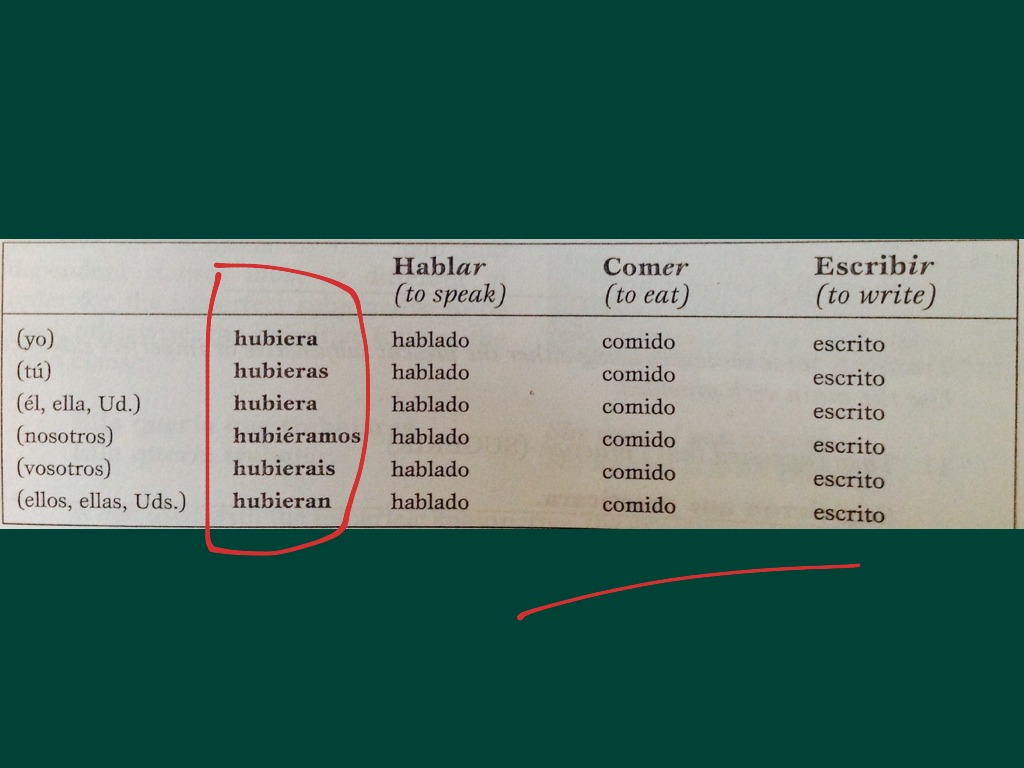

There is no special reason why you would have to use the ‐ se endings because they are exactly the same as the ‐ ra endings just be prepared to understand what they mean when you hear or see them. To use these endings, you must also use the ellos form of the preterit minus the ‐ron ending. In Table, notice that the letters ‐se replace ‐ra in every form. There is another set of endings, which is less frequently used, that can be used instead of the ‐ra/‐ras/‐ramos/‐rais/‐ran endings to create the past subjunctive. Yet here, at LightSpeed Spanish, we have developed the perfect system to walk you through the entire range of the Spanish Subjunctive, step by step. Preterit ellos form: hablaron minus the ‐ron = habla‐ Most students of the Spanish language shy away from this subject and its no wonder So many books on the market make it look complex and difficult to understand.Preterit ellos form: tuvieron minus the ‐ron = tuvie‐.The verb tener in Table serves as a good example because it shows how different a verb can look in the past subjunctive due to the fact that the ellos preterit form often has little in common with the infinitive form. And as you can see in Table, á may be the accented vowel in front of some nosotros/nosotras endings. As you can see in the tener example in Table, that is é for some verbs. Notice that the vowel in front of the nosotros/nosotras ending must have an accent mark. Remove the ‐ron and add the endings in Table. There are a plethora of verbs that are irregular in the preterit, but once you've remembered the ellos form, you can easily turn the preterit into the past subjunctive.Īll verbs end in ‐ron in the third person preterit form. Although that sounds simple, there is one difficulty: The first rule is to start with the third person plural form of the preterit. There is only one way to put the subjunctive in the past tense, and because it's based on the preterit tense, it's more fitting to call it the “past subjunctive.” Before you can learn how the past subjunctive is used in sentences, however, you must first learn to create the forms.Īll verbs, without exception, follow the same rules for forming the past subjunctive thus, the past subjunctive tense has no irregular verbs. Imperfect subjunctive, but that title is unnecessarily confusing. There is another subjunctive tense to use when the subjunctive is necessary but the sentence is in a past tense. Forming the Past Subjunctive: Verb Rules The past perfect subjunctive, or pluperfect subjunctive ( el pluscuamperfecto de subjuntivo ), is used to talk about hypothetical situations in the past, past conditionals, and past actions that preceded other past actions.Past Subjunctive and Sequence of Tenses.Passive Voice Conjunctions Sentence Variations.Present Subjunctive: Truly Irregular Verbs.


Stem‐Changers in the Present Subjunctive.Verbs with Spelling Changes in the Preterit.Stem‐Changing Verbs in the Present Tense.Interrogative Pronouns (Question Words).


 0 kommentar(er)
0 kommentar(er)
